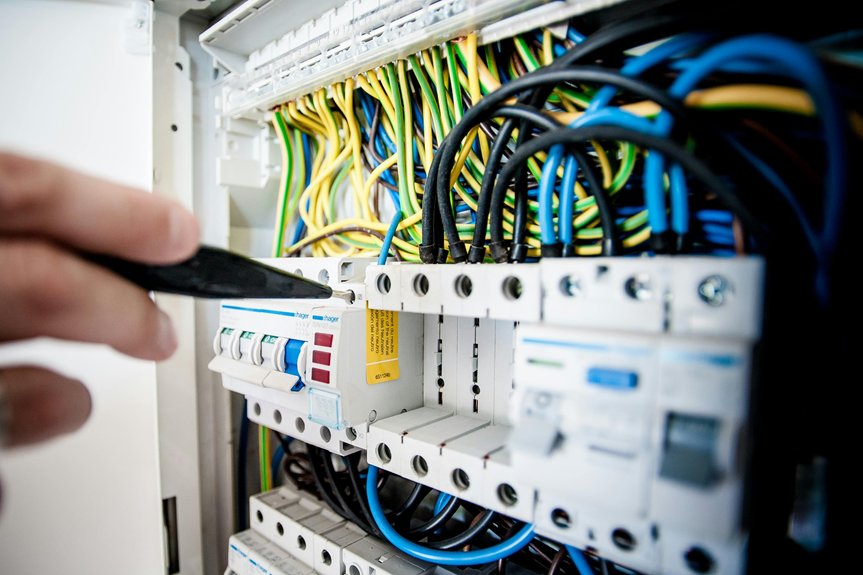Blown-in insulation costs typically range from £1.00 to £2.30 per square foot, depending on the material used, with fibreglass being the most affordable option. Labour costs can add an additional £1.00 to £1.50 per square foot, influenced by the accessibility of the area and the complexity of the installation.
While initial expenses may vary, the long-term energy savings from improved insulation can outweigh these costs by reducing heating and cooling bills for many years to come.
It’s important to consider various factors that can impact overall expenses, such as the type of insulation material, the size of the area to be insulated, and any specific requirements for your property.
Investing in blown-in insulation not only enhances the comfort of your home but also contributes to energy efficiency, helping to lower your carbon footprint.
For a clearer understanding of how blown-in insulation can benefit you, continue exploring the details of different materials and installation options available.
Factors Affecting Insulation Expenses
Several factors influence the overall cost of insulation, and understanding these can help homeowners in the UK plan their budgets more effectively.
The type and quality of insulation material play a significant role, with options such as fibreglass, cellulose, rockwool, and natural wool varying in price. Insulation with higher R-values, which enhances its effectiveness, requires more material and consequently increases costs—colder regions necessitate these higher R-values for comfort.
Denser materials, such as dense-pack cellulose, generally incur higher costs compared to lighter alternatives like fibreglass. Additionally, regional preferences can affect prices, as certain areas favour specific materials based on local climate conditions and availability.
The complexity of the installation process also contributes to labour expenses. Challenging spaces to access or multiple zones can add to the overall cost.
Material availability can also cause fluctuations in prices, as shortages or increased demand for certain insulation types can drive costs up or down. All these factors combined influence the final price, guiding homeowners towards choices that align with their specific needs and financial plans.
Breakdown of Material and Labor Costs
Understanding the costs associated with insulation projects involves a close examination of both material and labour expenses. The costs for materials can differ significantly based on the type of insulation selected. For instance, fibreglass insulation tends to be more affordable, whereas natural wool can be considerably pricier. Labour costs also play a crucial role, often constituting a substantial portion of the overall expenses due to the expertise and time required for installation. Blown-in insulation is especially popular because it effectively fills gaps and hard-to-reach spaces, which can influence the total cost of installation.
Here’s a simplified overview of insulation material costs:
| Material Type | Cost per sq. ft. |
|---|---|
| Fibreglass | £0.50 – £1.50 |
| Cellulose | £1.00 – £2.30 |
| Mineral Wool | £1.40 – £2.10 |
| Natural Wool | £1.50 – £3.10 |
| Labour | £1.00 – £1.50 |
This table provides a visual representation of the balance between the choice of insulation material and the investment in skilled labour necessary for effective installation.
When planning your insulation project, it is essential to consider both the material costs and the labour required to ensure optimal energy efficiency and comfort in your space. The right combination can lead to significant savings in energy bills over time, making insulation an investment worth considering.
Long-Term Savings and Energy Efficiency
Blown-in insulation provides substantial long-term savings and enhances energy efficiency by effectively minimising heat transfer. It forms a continuous, seamless layer that traps air, which helps prevent heat loss during the winter and heat gain in the summer, resulting in more stable indoor temperatures. Furthermore, it reduces air leaks and lightens the workload on heating, ventilation, and air conditioning (HVAC) systems, thereby extending their lifespan and lowering operational costs. Homeowners can experience considerable savings on their heating and cooling expenses. The advantages are particularly pronounced in colder regions, where insulation can lead to even greater reductions in energy bills. Insulating basement walls or floors can also significantly lower heating costs. The insulation boasts a lifespan of around 30 years, ensuring that these savings are sustained for decades. In addition, blown-in insulation is one of the most cost-effective insulation options, making it accessible for many households looking to improve their energy efficiency. These benefits not only lead to decreased energy bills but also contribute to a reduced household carbon footprint, making homes more efficient and environmentally sustainable.
Conclusion
Blown-in insulation costs can differ significantly, influenced by factors such as material selection and the complexity of installation. While the initial expenditure may appear substantial, the long-term energy savings frequently surpass the upfront investment.
Understanding the cost breakdown empowers homeowners to make well-informed decisions. Effective insulation enhances energy efficiency, leading to reduced utility bills over time. Although there is an initial financial outlay, the advantages of improved comfort and lower energy costs render blown-in insulation a sensible option for many households.
Investing in quality insulation not only contributes to a more pleasant living environment but also supports sustainable energy use, making it a practical choice for those looking to enhance their home’s efficiency.

